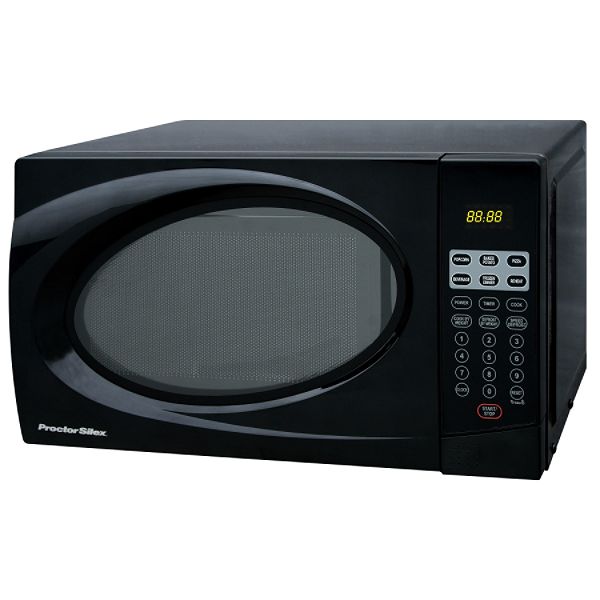
Note: By using the information presented in this blog, you agree to the terms described in the post entitled "Mission Statement and Disclaimer." Basically, you can't sue.
Have you ever microwaved something to disappointment? Maybe it was steaming hot on the top, but freezing cold at the bottom. Maybe that cup of water is still lukewarm after 5 minutes of microwaving. Maybe the food comes out really, really dry. Maybe on a plate of leftover thanksgiving food, the turkey is cold and the vegetables are steaming.
Well, lots of people don't quite understand how the microwave works, and how to best heat up food.
How Microwaves Work
There's all kinds of stuff I could get into when talking about microwaves, such as how you're shielding from being microwaved yourself, but I'm just going to stick with the parts that are relevant for heating up food.
Microwaves spin water molecules around, rotating them like they were wheels on a car. This causes friction, which results in heat, and its this very heat that warms up your food.
Think of the micro-waves as light, only invisible to your eyes (your eyes can't detect the frequency/wavelength of micro-waves, just like we can't see infrared waves, or UV waves). This light is shined upon the food, or whatever's in the microwave, and heats it up from the outside.
So what does this mean for heating up food?
Well, one is that you'll never be able to heat up the inside of the food as well as the outside. Say you have a large bowl of thick curry. The outside will be hot, almost burning to the touch. But the inside will be as cold as the refrigerator it came from.
The solution? Minimize its volume to surface area ratio. In other words, spread it out! Instead of clumping it all into a ball, make it more like a pancake. Use a plate to spread it out.
What about soup, you might ask. Soup is tricky, and you almost would be better off simply boiling it. If you insist on using the microwave, this means you'll have to re-stir every two minutes until it's hot to your satisfaction. Otherwise, the top layer of water will just keep evaporating off, leaving the rest of the soup cold. Remember, it's the water molecules that directly heat up the food.
Which gets me to the next point...why do certain foods heat up faster than others? If you've ever tried to microwave a leftover hamburger, you'll often find the tomatoes and lettuce to be much much hotter (and disgustingly soggier) than the meat.
The reason is because vegetables have more water content than meats. The key here is water content. So a cup of KFC gravy will be incredibly hard to heat up, because much of it isn't water, it's fat, which doesn't respond to microwaves by spinning around (or at least, nowhere as well as water does). Whatever has more water content will heat up faster and hotter, whereas whatever has less water content will heat up slower and less.
The solution? Microwave each component separately, separating meats and vegetables (or in the case of the hamburger, just leave the vegetables out of the burger). You can put them together at the end.
Desanitization
The microwave is an incredible device for sanitizing anything. Because all living organisms are far more than half water, and microwaves spin the water molecules around, you'll explode any living organism inside the microwave (which is why you should never microwave a pet, no matter how quickly you want its fur to be dry).
The water molecule will start to spin around, creating friction and disrupting the cellular structure of the germs. The heat itself can kill the organisms by exploding them, but the friction will also tear away at the skin of the germs, spilling out its contents.
One easy way of desanitizing a sponge is to moisten it up (run it underwater and squeeze out the water) and microwave it on a plate for about a minute. Be extremely careful, however, the sponge will be STEAMING. (You should fear steam more than boiling water, by the way, because unlike boiling water, steam can go BEYOND 212 degrees fahrenheit. There's no upper limit to its temperature!!!) In fact, I'd go ahead and wait for the sponge to cool down before taking it out of with your hands. Or you could wear oven mittens.
Don't use metal!
One last warning - leave the foil out.
Many foods will have foil wrapping. Be sure to avoid using this. Metal reacts in a very different way than water to microwaves. Metal actually sparks, so you can actually set your microwave or microwave contents on fire. It can also burn out the microwave, leaving you with a broken or dysfunctional microwave.
Apparently, microwaving dehydrated foods (food without water content), or running the microwave when there's nothing with water content inside it, can burn out the microwave as well. But this is an explanation for some other day....
If you're looking for a microwave, or other products, these vendors give pretty steep discounts:
Soap.com
No comments:
Post a Comment